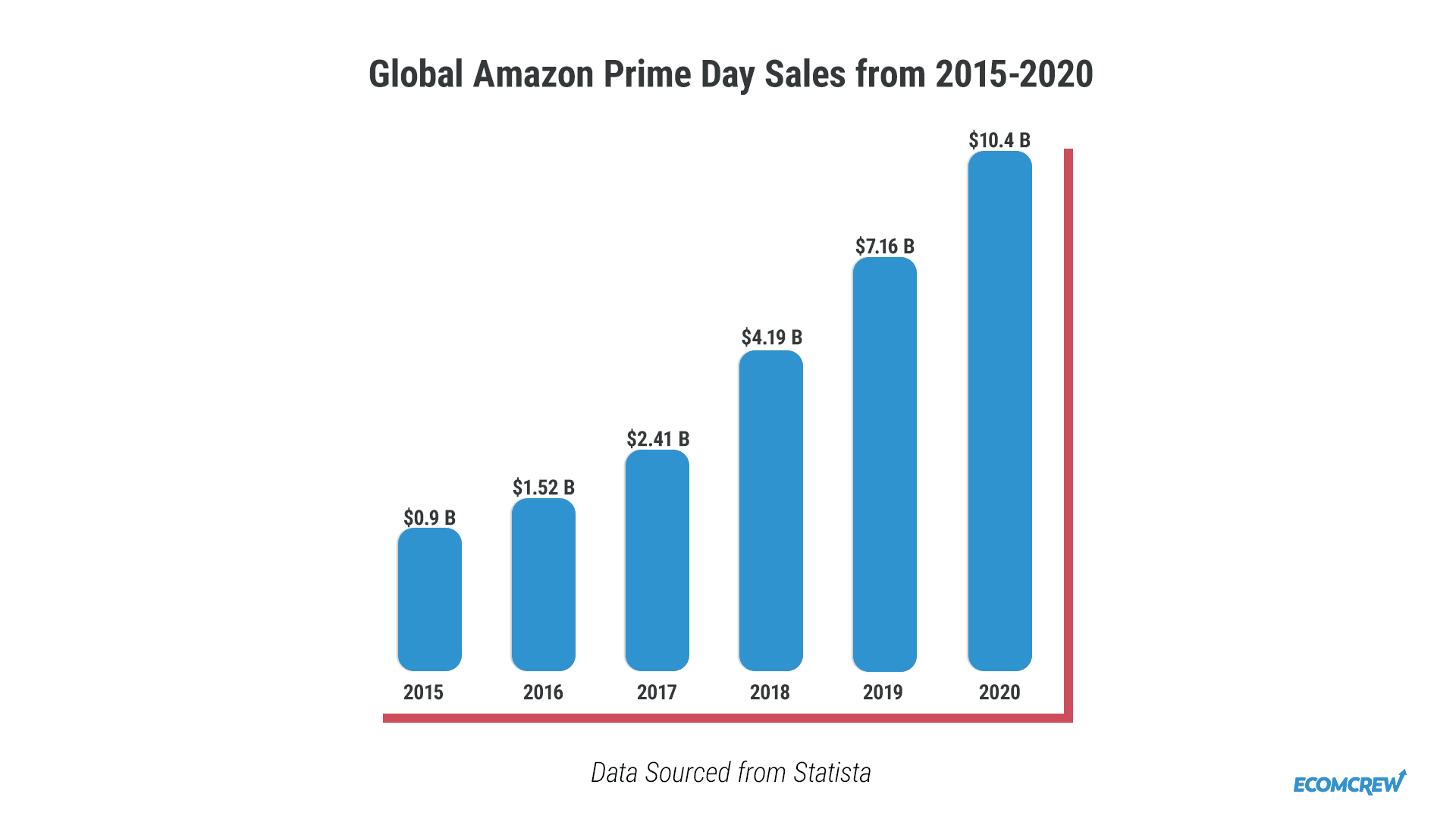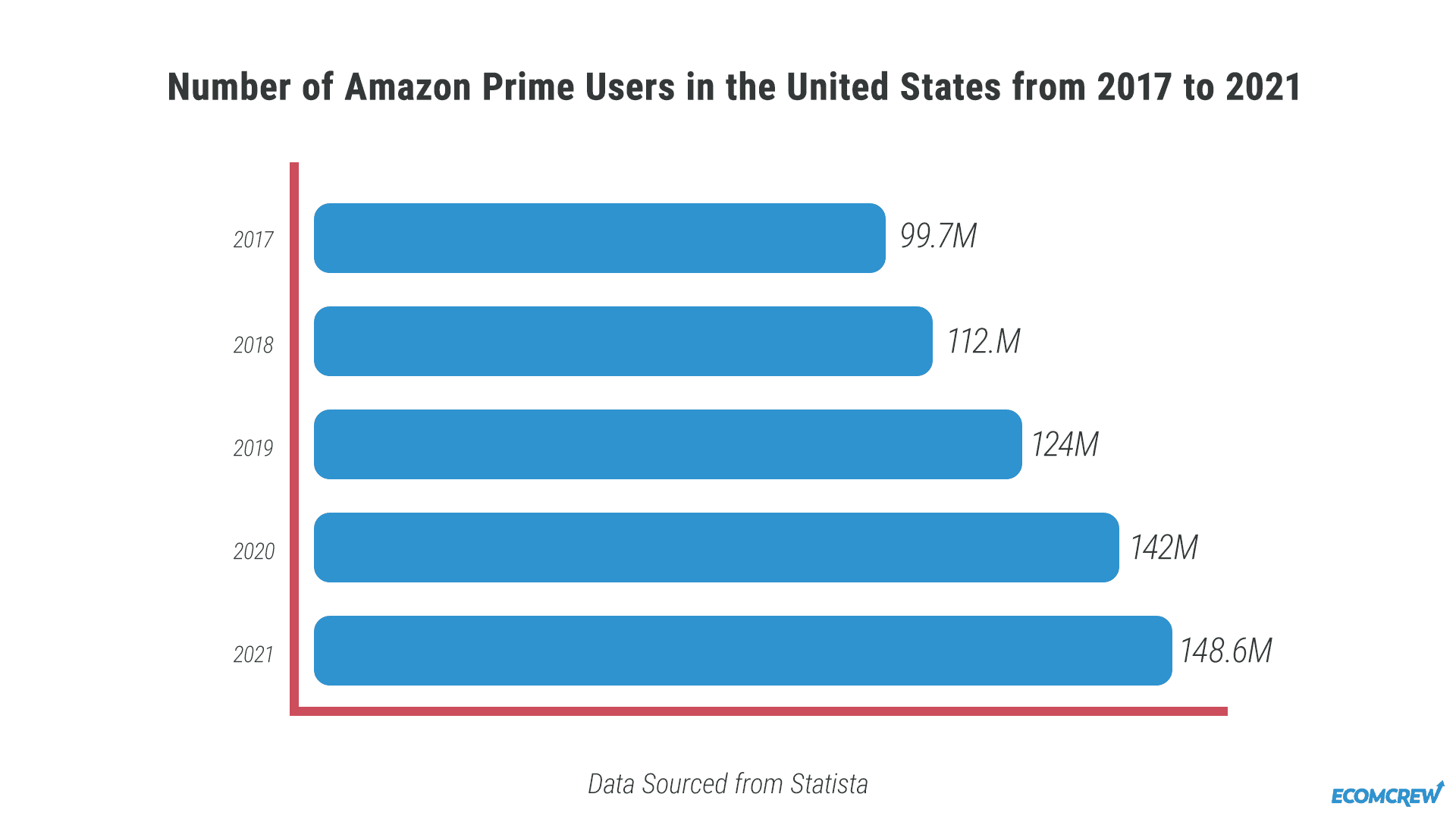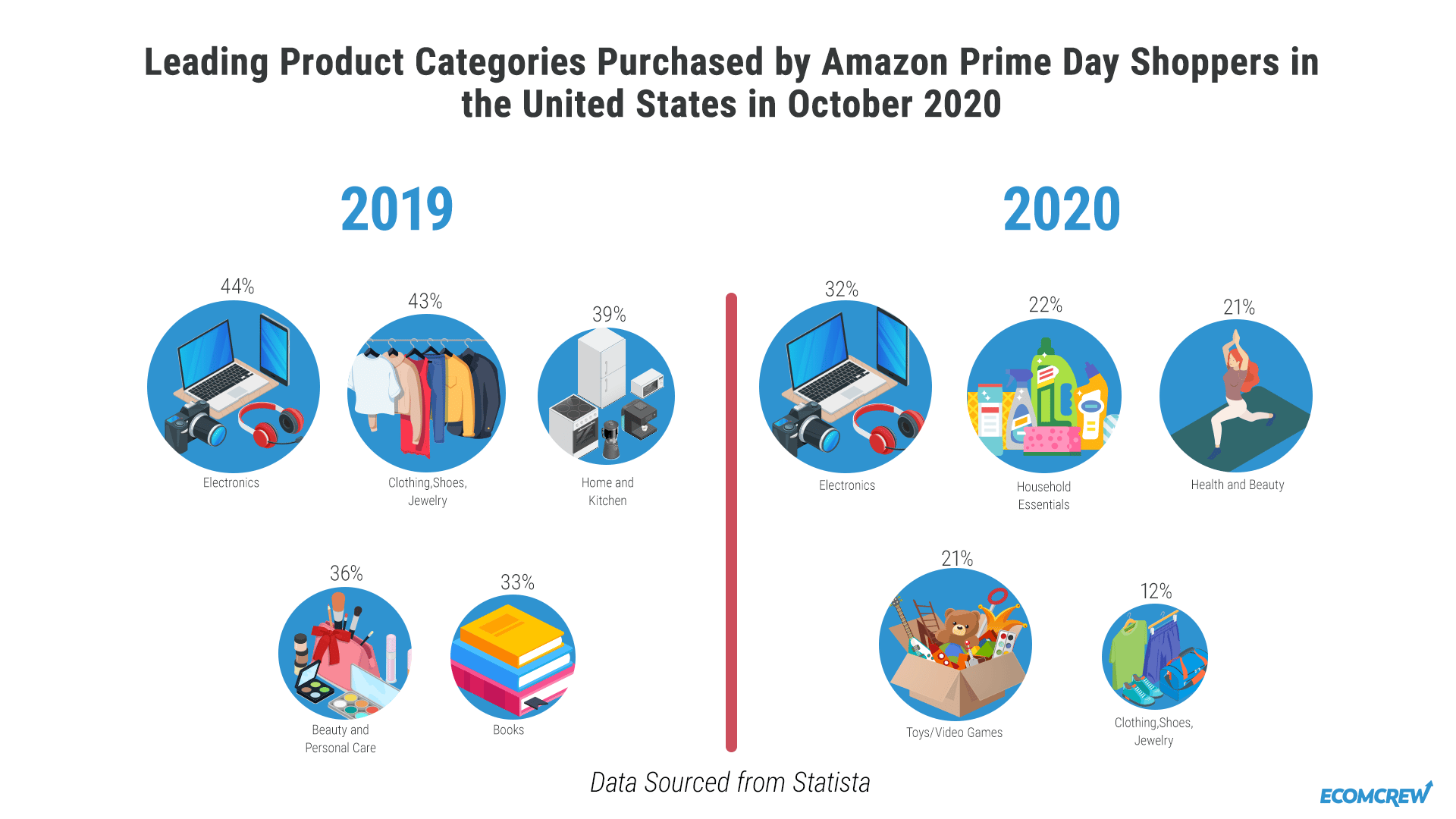Amazon Prime Day: History and Statistics
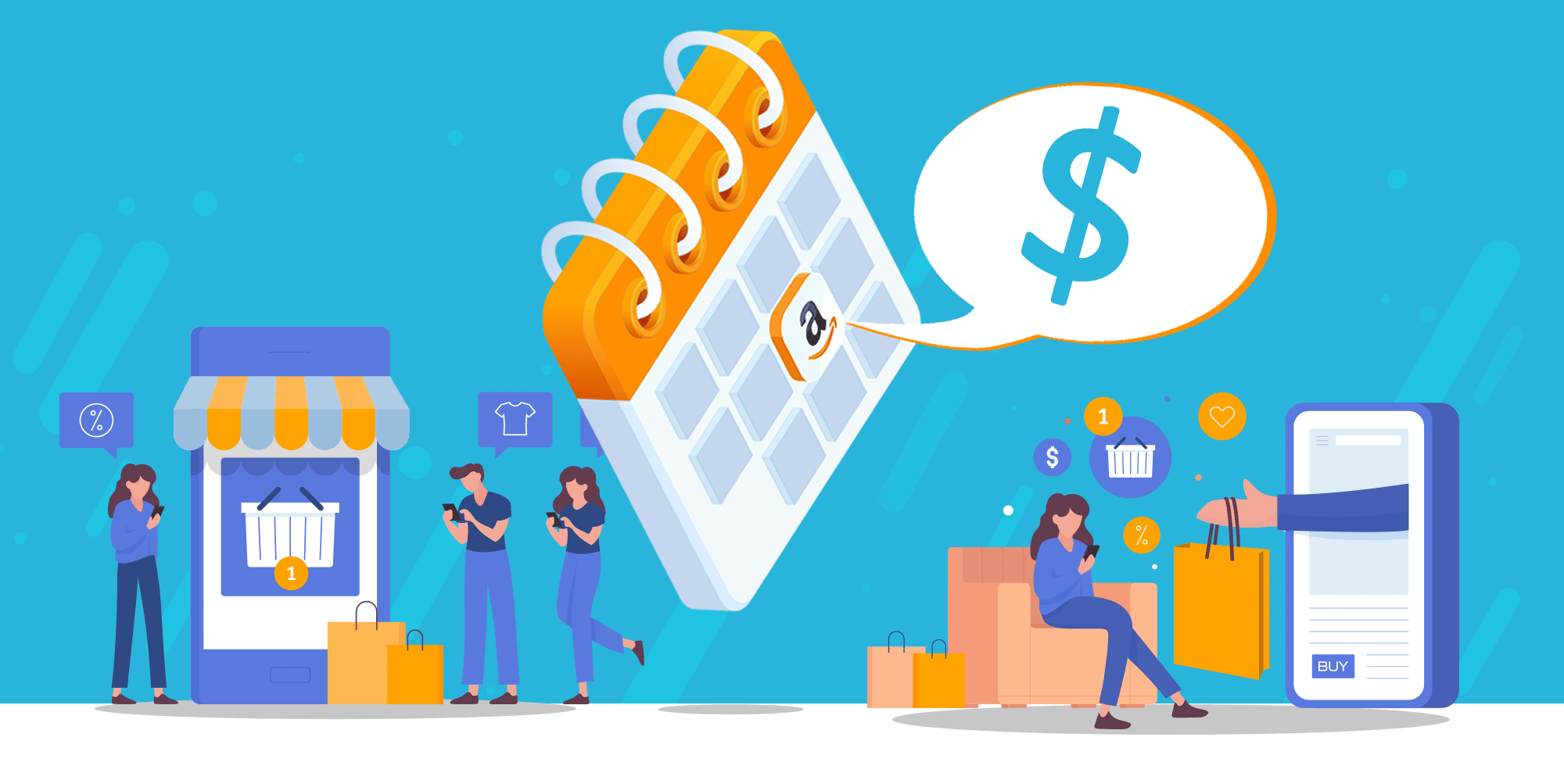
It started as a celebration. Now, it’s one of the biggest online sales events of the year.
Prime Day helped solidify Amazon’s reputation as the top ecommerce company in the world. Let’s get to know how it all started and how it’s going and find out if Prime Day is really worth it for ecommerce sellers.
Related Podcast: E164: Amazon Prime Day Recap
Contents
- What Is Prime Day and How Did It Start?
- When Is Prime Day and How Long Does It Last?
- Pros and Cons of Prime Day for Sellers
- Prime Day Sales (2015 to 2020)
- How Sellers Should Prepare for Prime Day
- How Many Prime Members Are There?
- Most Popular Prime Day Products and Categories
- The Rise of Anti-Prime Day Events
- Conclusion
What Is Prime Day and How Did It Start?
Prime Day is an annual online sales event on Amazon that gives huge discounts to its Prime members. It’s a way to get more people to subscribe to Prime and to rival Alibaba’s Singles’ Day, Black Friday, and Cyber Monday.
Amazon Prime Day started on July 15, 2015 as a way to celebrate the 20th anniversary of Amazon.com going live.
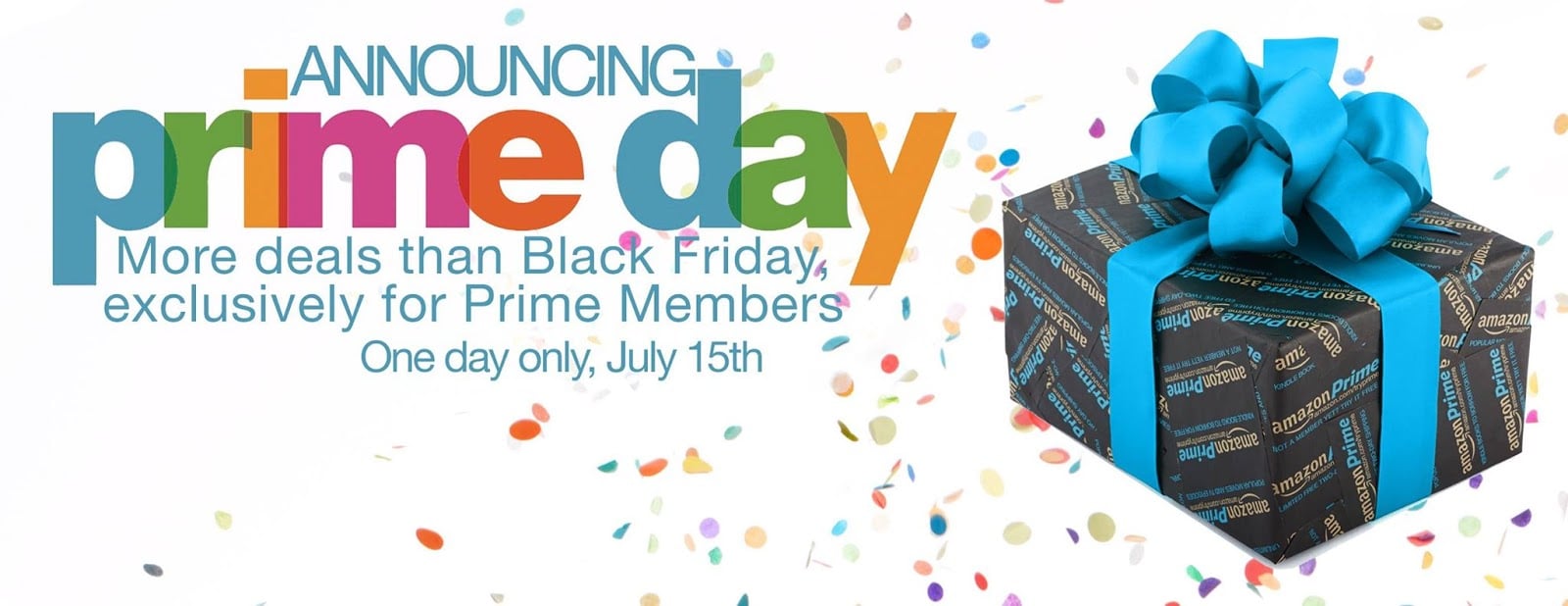
The first Prime Day was participated in by only nine countries. In 2021, twenty countries will be participating, excluding Canada and India whose Prime Day is postponed because of COVID concerns.
The sales event rakes in more revenue both for Amazon and its third-party sellers. However, not all 3P sellers provide discounts during Prime Day. In our own survey, only 34 percent of FBA sellers gave Prime Day discounts in 2020 and only 47 percent are giving discounts in 2021.
According to National Today, 78 percent of the 2000 surveyed Americans have heard of Prime Day and 60 percent participate in it.
When Is Prime Day and How Long Does It Last?
From 2015 to 2019, Prime Day has been celebrated consistently every July. However, in 2020, it was postponed to October because of the pandemic. And in 2021, it is set in June so it will not be outshined by the rescheduled Olympics.
It started out as a one-day sale. But overtime, Prime Day has become kind of a misnomer because it now spans two days. And with so-called Anti-Prime Day events on the rise, it may take longer. More on them later.
The table below summarizes the date and duration of all Prime Days so far.
| Year | Prime Day Start Date | Prime Day Duration |
|---|---|---|
| 2015 | July 15 | 24 hours |
| 2016 | July 12 | 24 hours |
| 2017 | July 11 | 30 hours |
| 2018 | July 16 | 36 hours |
| 2019 | July 15 | 48 hours |
| 2020 | October 13 | 48 hours |
| 2021 | June 21 | 48 hours |
Pros and Cons of Prime Day for Amazon Sellers
Prime Day brings a big sales boost for many sellers, but not everyone gives discounts. You’ll still get the benefits from the extra traffic though, even if you don’t discount your products.
Check out the advantages and disadvantages of Prime Day for sellers below:
Prime Day Pros
- Exposure. Millions of customers visit Amazon on Prime Day. Offering discounts will attract more buyers to your store and browse your products. It’s also a great way to improve brand awareness.
- A chance for slow-selling inventory. Because of the flock of buyers on Prime Day, there’s a good chance that you can get rid of your slow-selling products faster, before you even consider liquidation.
- Increased revenue.. More traffic means more potential sales but not necessarily profits.
- Prime Day programs.. Amazon uses Prime Day to promote small and medium-sized businesses. In 2021, it rolled out a curated storefront for woman-owned and Black-owned businesses, among others.
Prime Day Cons
- Discounting. Offering deals on Prime Day will eat into your profit margin.
- Inventory management. You’ll have to prepare your products ahead of time to make Amazon’s cut off. Amazon doesn’t announce every significant change ahead of time. If you’re like most sellers who were blindsided by the reductions in restock limits so close to the 2021 Prime Day, you’ll have a hard time getting more inventory into Amazon’s warehouses.
So is giving discounts on Prime Day worth it?
It all depends on your profit margin and how much you’re willing to spend and/or lose for the exposure.
As per Edison Trends, Amazon held 87 percent of the market share during Prime Day 2019 despite the existence of other online sales events. Also, around 76 percent of consumers wait until Prime Day to purchase something specific because they know it will be cheaper. So it’s definitely worth a shot if you can afford it.
Related Reading: Top 10 Amazon.com Marketplace Sellers of 2020
Prime Day Sales (2015 to 2020)
The now two-day sales event rakes in billions of dollars not only for Amazon but also for third-party sellers. In 2020, Amazon announced that its third-party sellers sold over $3.5 billion worth of products—up 45.2 percent compared to 2019.
The graph below shows an upward trend in Prime Day revenue, and we’re expecting it to continue this way in the coming years.
According to CIRP, Prime members spend around $1,400 per year on Amazon, while non-Prime members spend only $600 on average.
Before the actual Prime Day, Amazon also offers pre-Prime Day deals. The chart below from Edison Trends shows the data for the past three years for Amazon spend a week before Prime Day.
How Many Prime Members Are There?
As of June 2021, there are almost 150 million Prime members in the United States alone and around 200 million worldwide.
A month of Prime membership currently costs $12.99, while an annual subscription is at $119 (plus taxes). There are also discounted student rates at $6.49 and $59 for monthly and annual subscriptions, respectively.
How Sellers Should Prepare for Prime Day
Even if you’re not planning to give discounts on Prime Day, there’s still a high possibility that you’ll experience a sales boost. To take advantage of the situation, you can do the following:
- Prepare your inventory in advance.
- Make sure to consider lead time to avoid stockouts. Prime Day normally happens mid-year, so let your manufacturer know in advance to expect a huge order.
- Be mindful of your numbers.
- As mentioned earlier, you can still reap the benefits of the increased traffic on Amazon even if you don’t offer discounts. Many sellers just leave their price as it is, while others offer really good deals. Just make sure you’re not selling at a loss. But if you are, make sure it’s worth it.
- Be aware of deadlines for deals.
- If you’re planning to offer deals and/or coupons, take note of the deadline. Lightning Deals, for example, have a specific deadline for submission. Also, it would take at least six hours for coupons to go live after creation.
- Optimize your Amazon listing
- Prime Day is one of the best times to make a good impression. So make sure you’re optimizing your listing copy and images.
Most Popular Prime Day Products and Categories
While third-party sellers can benefit from the increased traffic on Prime Day, Amazon still owns the best selling products on Prime Day 2020: the Echo Dot and Fire TV Stick 4K.
Non-Amazon best sellers include
- iRobot Roomba Robot Vacuum
- LifeStraw Personal Water Filter and
- LEGO Star Wars Stormtrooper Helmet
The table below summarizes the top 10 searched terms on Amazon.com based on search frequency for the two days of Prime Day 2020.
| Top Terms for October 13, 2020 | Top Terms for October 14, 2020 |
|---|---|
| apple watch | airpods |
| nintendo switch | apple watch |
| airpods | nintendo switch |
| air fryer | air fryer |
| ipad | face mask |
| tv | laptop |
| laptop | tv |
| lego | ipad |
| fire stick | desk |
| desk | halloween decorations |
The infographic below shows the leading categories for Prime Day 2019 and 2020 in the United States. In both years, electronics was the leading category.
The Rise of Anti-Prime Day Events
With COVID-19 forcing more and more transactions to occur online, many brick-and-mortar stores are stepping up their online sales events.
The most notable ones in 2021 are summarized below:
| 2021 Online Sales Events | ||||||
|---|---|---|---|---|---|---|
| Amazon | Target | Walmart | Best Buy | Kohl's | Newegg | |
| Name of Event | Prime Day | Target Deal Days | Deals for Days | The Bigger Deal | Wow Deals | Fantastic Tech |
| Dates | June 21 and 22 | June 20 to 22 | June 20 to 23 | June 15 to 22 | June 21 and 22 | June 21 to 23 |
Other companies are also offering their own subscriptions to rival the Prime membership. Best Buy recently launched Best Buy Beta, and it’s currently available only in selected states. Walmart+ is also fairly new, launched only in 2020.
| Prime Membership | Walmart+ Membership | Best Buy Beta | |
|---|---|---|---|
| Free trial period | 30 days | 15 days | – |
| Monthly membership | $12.99 | $12.95 | – |
| Annual membership | $199 | $98 | $199 or $179.99 (for Best Buy credit card holders) |
| Student discount | Yes | No | No |
| Year launched | 2005 | 2020 | 2021 |
Conclusion
Prime Day set the bar for many online sales events. While there are more companies trying to rival Amazon, the company shows no signs of slowing down in terms of sales and increasing its Prime members.
Did you offer Prime Day discounts before? How did it help your ecommerce business?
